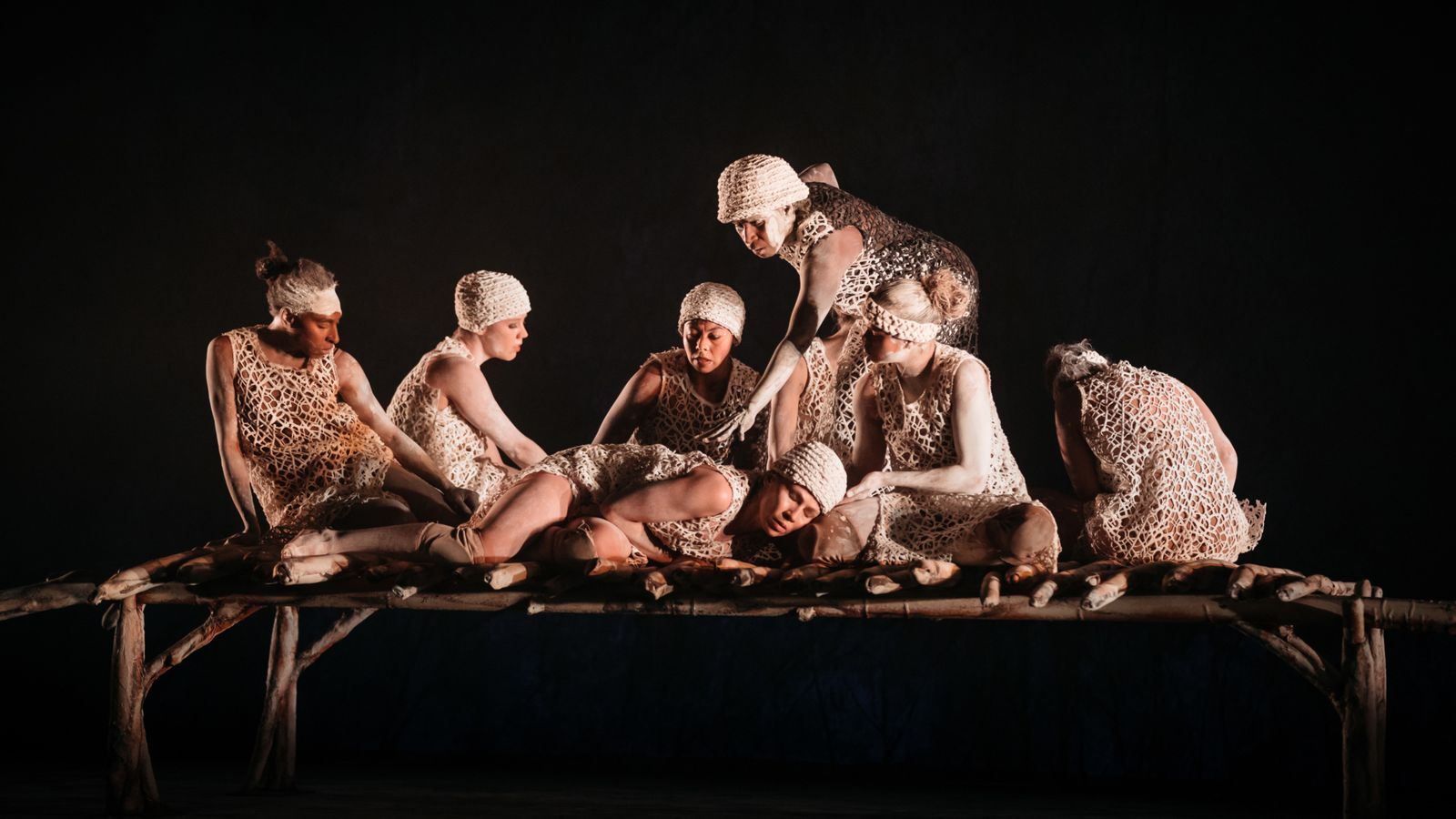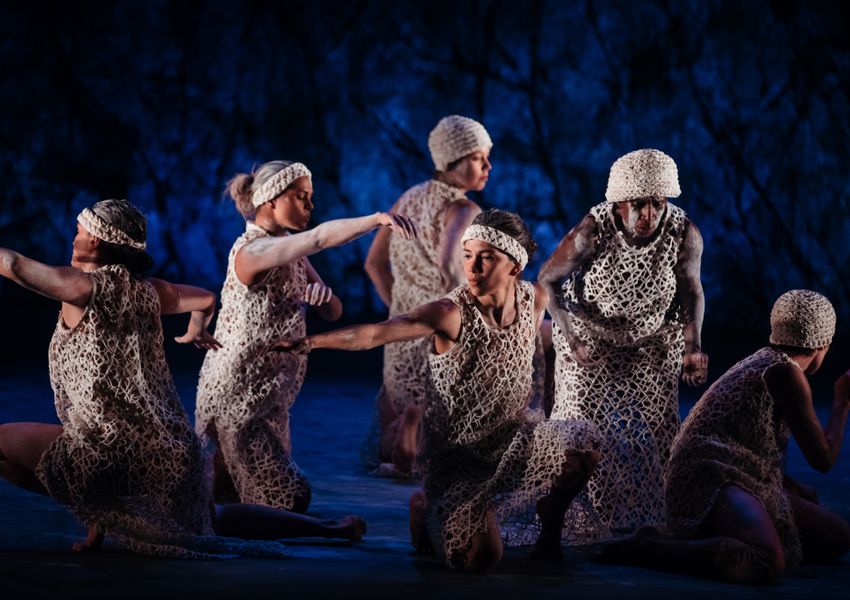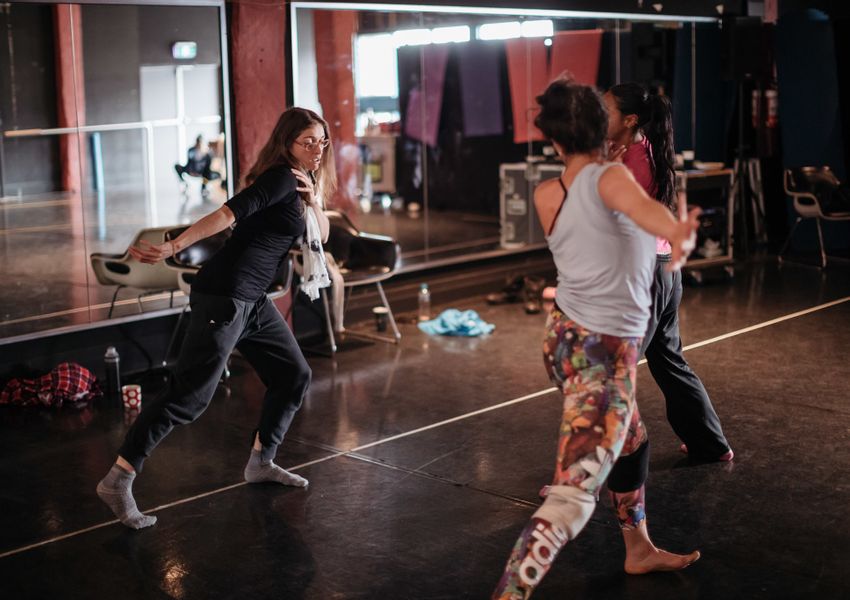
I wish that there were 21st century practices like these in our urban environment - time independent rituals that supported people processing and healing from the loss of loved ones.
Bowls of Mourning was created in response to the gypsum caps which were made and worn during periods of mourning - sorry business. These artefacts are detailed in Bruce Pascoe’s book Dark Emu, Black Seeds: agriculture or accident (2014). Working on this section felt like I was exploring something extremely sacred and feminine - I had to surrender to my gut instinct and let that guide the choreography.
I looked at the life-cycle of the caps - the crafting of the caps; the textural transitions from rough to wet and slippery to solid and smooth; the wearing of the caps - the weight, the feelings, the rituals and ceremony involved, and their purpose; and I explored physical responses to the caps’ weight and how this came to embody the weight of bereavement.

I workshopped tasks and movement motifs, first exploring the creation of the caps - how an underlying support cap would initially be woven from natural fibres such as emu sinew or plant materials, prior to the application of gypsum. As the female ensemble enters the stage, they represent the web of the under-cap and the raw and interwoven communal grief, threaded together through shared experiences. The dancers support each other in collective unity.

Watch Elma Kris in Bowls of Mourning
Elma Kris represents the matriarch and the person closest to the deceased. Motifs were drawn from the process of applying gypsum, a process that could take up to six months. These dance 'words' were developed and worked into different group configurations, always interconnecting the energy of the dancers within the space. I was particularly interested in how the action of creating was in itself a grieving process and how a sense of healing and resolution could result from this cultural practice. The level of care involved through touch, creation and collective practice through weeks and months was an outlet for grief and a pathway to overcoming loss.
People closest to the deceased person could build their caps for months, the caps growing heavier and heavier and eventually weighing as much as 10kg. Props were sometimes needed to support their weight. With time, the women's hair, cropped prior to the cap making, would loosen the cap from the skull and when the time was right, they would be lifted off - a weight off their shoulders … a weight layered with time and sorrow and precious memories, left to rest, on Country, in peace.
I wish that there were 21st century practices like this in our urban environment - time-independent rituals that supported people processing and healing from the loss of loved ones.
Co-choreography Dark Emu
Yolande Brown

-
Choreography Bowls of Mourning: Dark Emu
Yolande Brown
-
Choreography Bowls of Mourning: Dark Emu